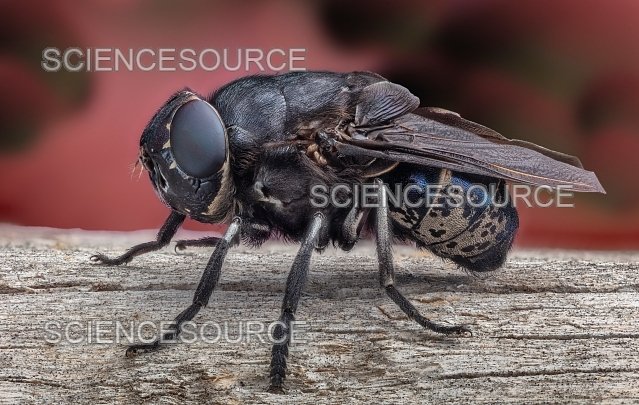
Detecting botfly hosts in forest environments isn’t just about avoiding such surprises; it’s crucial for understanding how these insects impact wildlife and human health. This article will walk you through various strategies that researchers and wildlife specialists use to identify potential hosts in the wild. We’ll break it down step by step, so even if you’re new to the topic, you’ll feel right at home.
Understanding Botflies and Their Hosts
To start our exploration, let’s get to know botflies a bit better. These insects are part of a fascinating yet complex life cycle. Adult botflies lay their eggs on or near a host animal. Once the eggs hatch, the tiny larvae burrow into the host’s skin, where they grow and develop, often causing irritation or infection. Common hosts include mammals like deer, cattle, and, unfortunately, humans.
You might be wondering why this matters. Understanding which animals serve as hosts can help us not only protect ourselves but also keep ecosystems balanced. In a forest environment, the interactions between botflies and their hosts can reveal a lot about the health of the ecosystem. If a particular host species is declining, it could signal broader environmental issues.
Field Observation Techniques
One of the most straightforward ways to detect potential botfly hosts is through **field observation**. This involves watching animal behavior in their natural habitats. Researchers often spend hours observing various species—like deer or cattle—to note their movements and health status.
During these observations, they look for signs of infestation, such as:
- Unusual scratching or grooming behaviors
- Visible lesions or skin irritations
- Increased hiding behavior, which might indicate discomfort
For example, if you notice a group of deer frequently scratching at their flanks or avoiding certain areas, this could suggest an ongoing botfly problem. Plus, using binoculars lets researchers keep a safe distance, ensuring they don’t disturb the animals while they collect valuable data.
Trapping and Monitoring Methods
Trapping can be an effective way to study botfly populations and their hosts. Different types of traps can be set up in forest environments to catch both the flies and their potential hosts. These traps use various attractants, like scents or visual cues, to lure the insects in.
For instance, **sticky traps** can be placed in areas frequented by mammals. Once captured, the botflies can be identified and studied. By examining the species caught, researchers can infer which mammals might be at risk. This method not only helps in identifying the insects but also provides clues about host selection.
Additionally, **camera traps** have become popular for monitoring wildlife activity. These motion-sensitive cameras take photos of animals as they pass by, helping researchers detect which species are present in the area. By analyzing these images, they can spot potential hosts and assess their health and behavior.
Biological Sampling and Analysis
Another valuable strategy involves **biological sampling** from potential host animals. This is usually done in a more controlled setting, like when a researcher captures an animal for study. They may collect skin samples to check for botfly larvae or other parasites.
Using tools like magnifying glasses or even microscopes, scientists can examine these samples for the presence of larvae and identify the level of infestation. This method provides direct evidence of botfly presence and helps researchers understand the relationship between the botfly and its host, including how various environmental factors might influence infestation rates.
Collaboration with Local Communities
Engaging local communities in botfly host detection can enhance research efforts tremendously. Local knowledge about wildlife behavior and health can provide valuable insights. By collaborating with community members—like hunters, farmers, or nature enthusiasts—researchers can gain a more comprehensive understanding of potential botfly hosts and their environments.
For example, individuals familiar with local wildlife can help report unusual animal behaviors or health issues they observe. Such grassroots efforts not only help in detection but also raise awareness about botflies and their impacts on wildlife and human health.
Technological Advances in Detection
Technological advancements are revolutionizing how researchers approach botfly host detection. High-resolution imaging and genetic analysis techniques allow for more precise identification of both botflies and their hosts.
For instance, **DNA barcoding** enables scientists to confirm the species of captured insects and understand their relationships with hosts. This can help pinpoint which types of mammals are more vulnerable to infestations. Moreover, the use of **drones** equipped with cameras can survey large forest areas quickly, identifying hotspots of potential botfly activity without the need for extensive ground work.
This tech-driven approach not only saves time but provides researchers with a more detailed view of the dynamics between botflies and their potential hosts across vast landscapes.
The Importance of Botfly Host Detection
Understanding botfly host detection strategies isn’t just an academic exercise; it has real-world implications. By learning more about these interactions in forest environments, we can better protect wildlife health and reduce the chances of zoonotic diseases—those that can jump from animals to humans.
Moreover, this knowledge is vital for conserving ecosystems. If we can identify which species are most affected by botfly infestations, we can implement measures to protect these animals and maintain ecological balance. Healthy wildlife populations contribute to thriving ecosystems, which are crucial for the overall health of our planet.
In closing, the world of botfly host detection in forest environments is complex but vital. Whether it’s through field observations, trapping methods, or engaging local communities, each strategy offers unique insights into this fascinating interaction between species. By continuing to explore and understand these relationships, we not only benefit our health but also contribute to the well-being of our forests and the diverse life they support.

